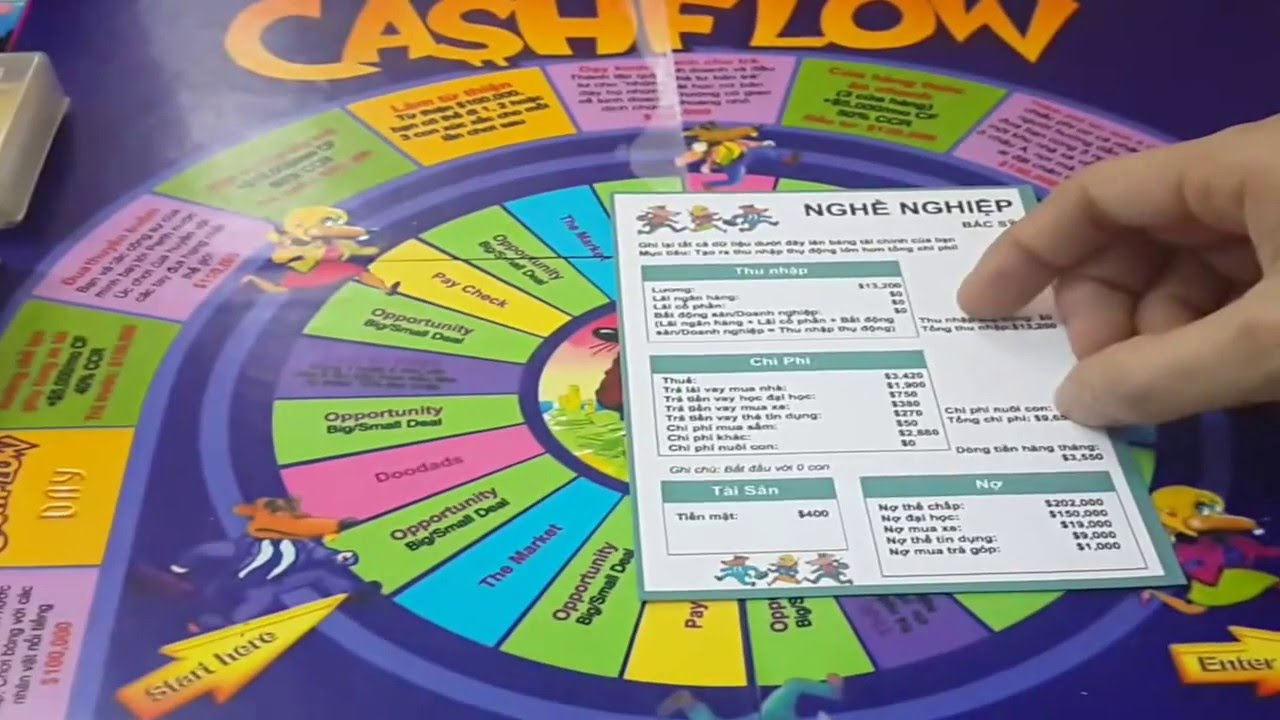

And in October 1996, we launched the CASHFLOW board game in Singapore to a group of about 500 players.Ī few years after we launched the CASHFLOW game the New York Times newspaper called us and said they wanted to do a story on the game. Having never invented a board game, every day was an experiment in what works and what doesn’t works. And it opens up discussion about money and investing that most people never talk about. You make investing mistakes… but with play money, not real money. It’s actually people teaching people.īy playing the game you see different strategies of different players. More importantly, a board game allows the players to become the teachers. "Rich Dad Poor Dad" - The #1 Personal Finance Book of All-Time We asked ourselves, “What if we could combine investing, one of the scarier subjects when it comes to money, and accounting, probably the most boring subjects, and create a fun and entertaining board game that teaches people exactly what we did?” That way the board game travels, and we don’t have to, because one of our mantras at Rich Dad is “ the more people we serve, the more effective we become.” People teaching people is much more effective and reaches so many more people, than us. I would say it is a bit pricey as well priced up at $79.99.We both like games. While there is some controversy around the creator of Cashflow, it might be best to judge the suitability of the game and is it good enough for you rather than focus on the creators previous negative intentions, but that’s your call. Although simple in set up but it become intricate and complex as the game moves on.įamilies have a great chance to get together and play a game that requires an element of thought and skill.

It can take some time to complete and that can put some people off. Final ThoughtsĪs the Cashflow board game is based on finances it can be seen to be educational.

Some believe that the game is complex in the way that players have to write down their investments and keep financial statements. Many people find it ironic that the cashflow game was created by a get-rich-quick businessman who is now bankrupt and dislike the controversy around the creator and his skill at getting people to spend more and more money with him. Its basic set up of roll and move is favored by families and so, it does offer an element of fun. The game is seen to be a good educational tool but many feel as though it is too long. The game has been released in several countries but has remained unchanged since its release date. The winner is the first person to either have a monthly income of $50,000 or the person who purchases their Dream. After they begin investing they have to make a note of the changes on their financial sheets. The game is based around financial sheets which are completed by players after they choose their starting career. The fast race track gives players too much money and so, they have to decide where to invest it before losing it. Players get paid for passing the paycheck marker on the rat race track, at which point they select a card, which can offer a wide range of good or bad deals. The rat race uses one die to move and the fast race uses two. The board consists of two tracks known as the rat race and the fast race. It consists of a board, dice, board movers and cards along with financial sheets. Set up of Cashflow is fairly straightforward. Players are required to roll the dice and move but they also have to fill in financial statements. Players will also learn about personal finance and investing, which does require a certain level of skill and knowledge. The game has an average skill and complexity rating due to the fact that players have to identify financial strategies. Who’s it best suited for?Ĭashflow the family board game is suitable for players of 10 years and over with a playing time of about 3 hours.Īs the Cashflow board game is all about finance and accountancy, it’s also an education game that’s suited for families.Ĭhildren could improve their mathematical and number skills while adults can also benefit in achieving an understanding of the financial world. It is a game that is designed for 2-6 players with the recommended number of players being 4-5.


 0 kommentar(er)
0 kommentar(er)
